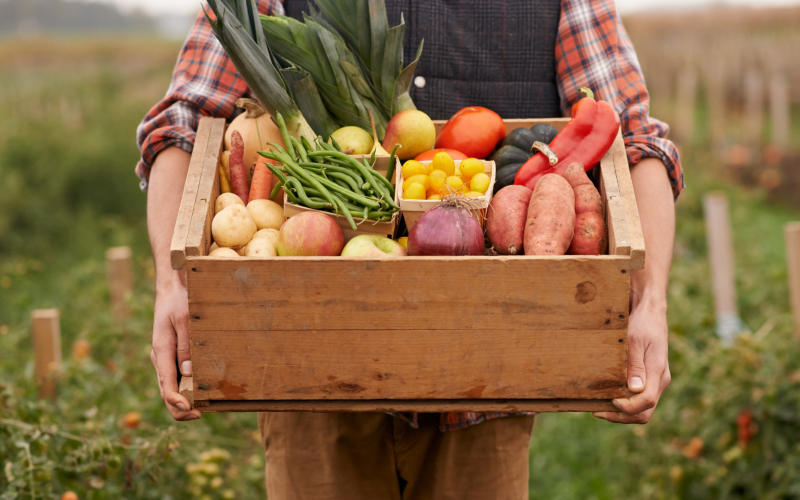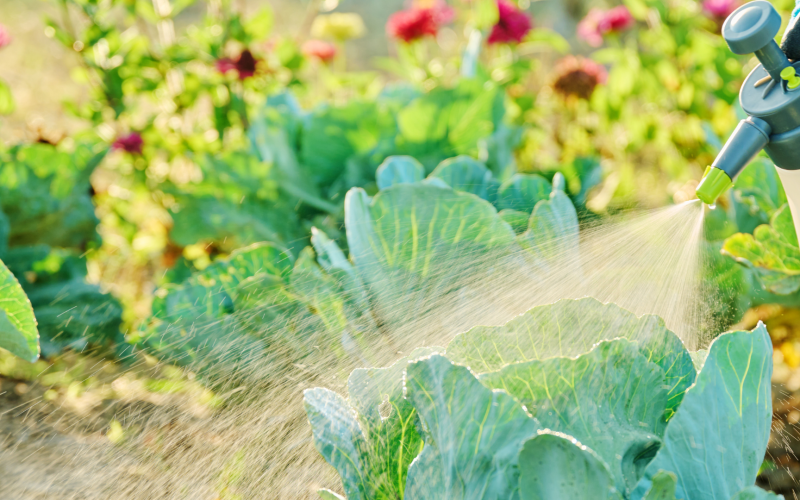Written by Rhoda Burrows, former Professor & SDSU Extension Horticulture Specialist.
Description
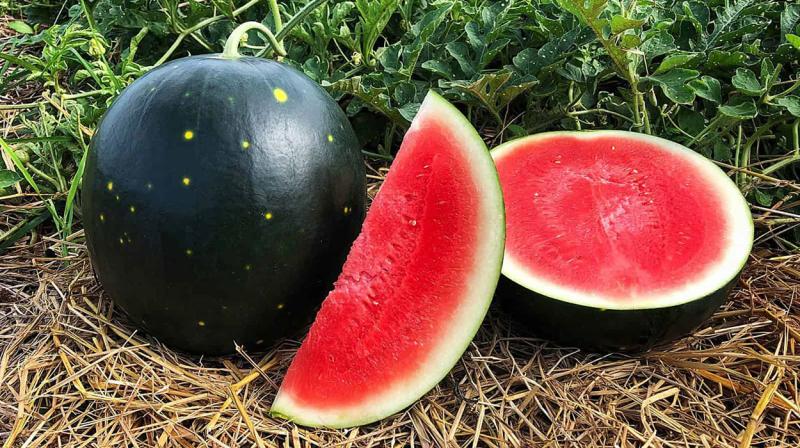
General Description: There are a wide variety of melons grown for their sweet fruit: watermelon, muskmelon, honeydew and more. Most are vining crops that take quite a bit of space in the garden throughout the summer, but reward gardeners with sweet, juicy flavor.
Watermelon, cantaloupe and honeydew are familiar to most of us, but there are many other melons available to gardeners. Seed catalogues offer everything from heirlooms with names we may have never heard of, such as Casaba or Charentais, to new hybrid crosses between the more-familiar, such as cantaloupe with honeydew. The rinds may be netted or smooth, and they range in color from white, tan, yellow and orange to dark green; the flesh can be white, or shades of orange or green; and the fruit may come in many shapes and sizes.
Melon Types
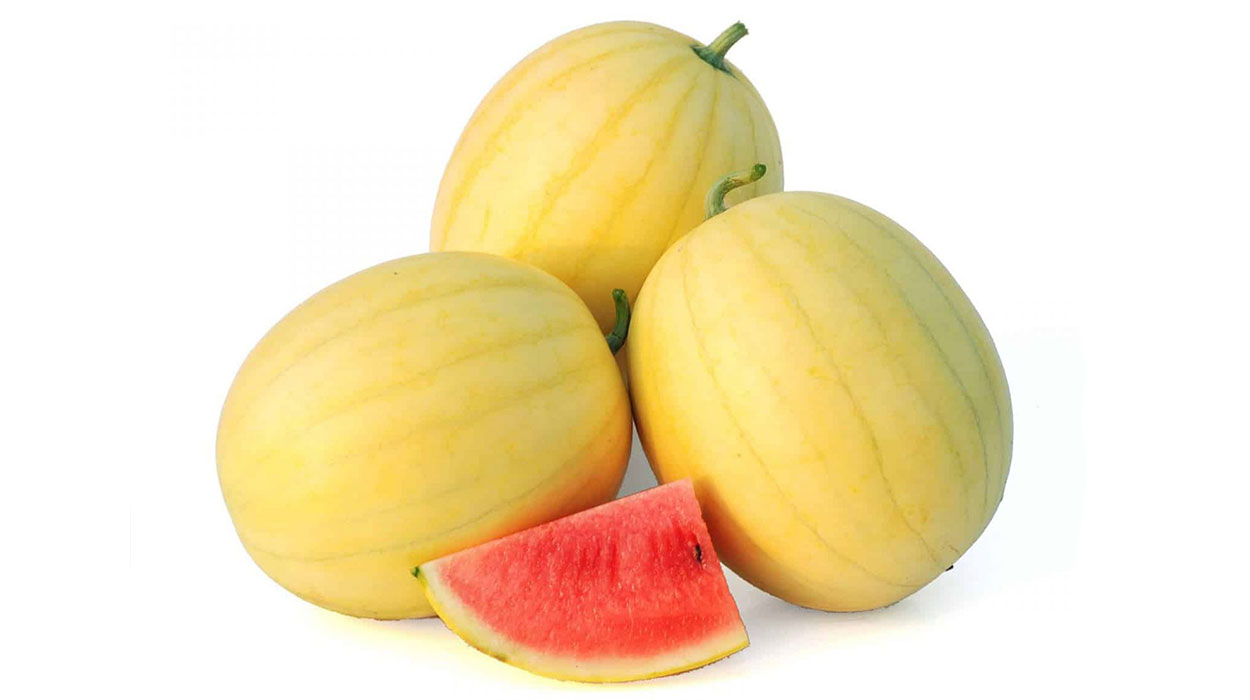
- Ananas: Ananas look similar to muskmelon, but their flesh may be cream to pale-orange colored. They ripen rapidly and have a short harvest window and storage life, and they may need to be harvested daily. Sweet, aromatic and slightly spicy flavor (“ananas” means pineapple in Italian), especially under warm growing seasons.
- Asian: Various types, tend to have firm or crisp flesh, and keep well.
- Canary: As the name suggests, the hard rind is an intense yellow when ripe, with pale-green to white flesh (Figure 3). Flavor and texture can be somewhat pear-like.
- Charentais: (French melons) are smaller melons (2 to 3 lbs.) that have a blue-green to yellowish-green smooth or slightly netted rind with deep-orange flesh. They may tend to split open; probably best grown in high tunnels or under plastic.
- Crenshaw: Oblong melons, almost a bit acorn-shaped, with a flattened stem end. Rinds are rough, but not netted, creamy-yellow to green. Orange or pink flesh. Very aromatic and sweet tasting.
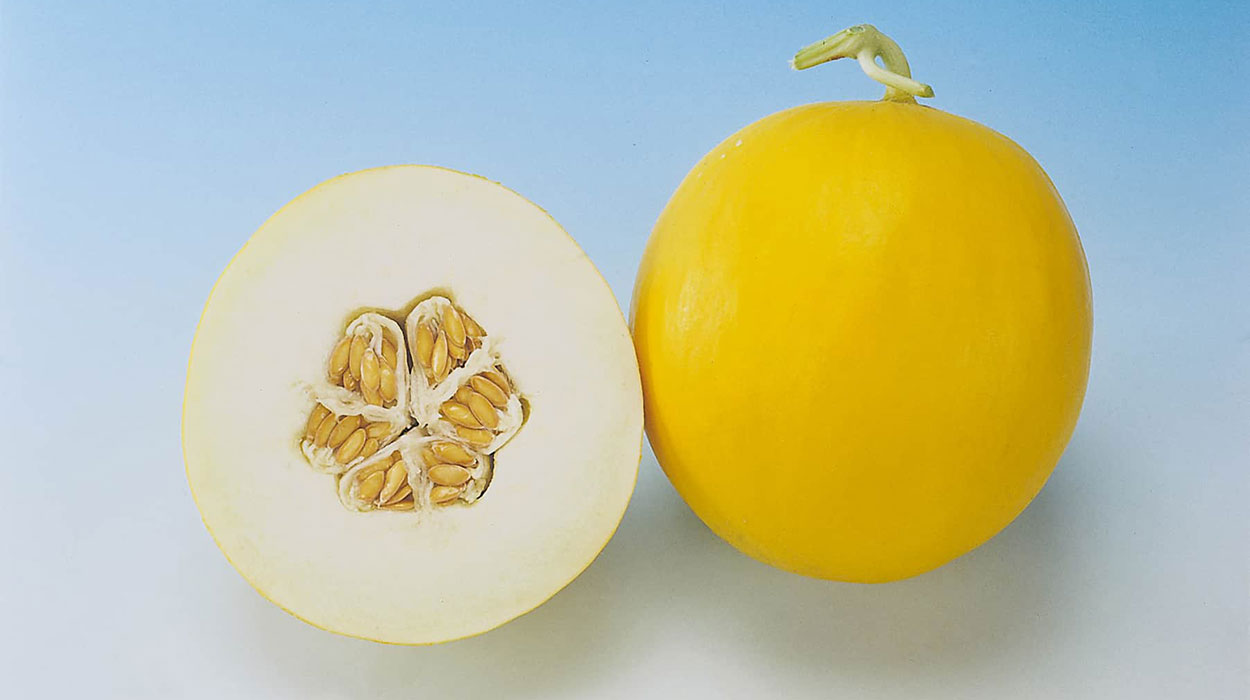
- Galia: Great dessert melon; very sweet. Lime-green flesh; netted rind is yellow when ripe. Flavor has been described as banana-like.
- Honeydew: Honeydew melons are smooth-skinned with green, yellow or white rind; the flesh is usually cream to green, sometimes even orange. Generally they do best under warm seasons.
- Muskmelon: Usually called “cantaloupe” in the United States, “Eastern” types are fresh-market varieties with coarse netting, deep sutures (ribs), strong aroma, soft flesh and relatively short shelf life; while “Western” types tend to be smaller, lack ribs, have less aroma, and keep longer. Newer varieties may combine characteristics of both types.
- Watermelon: Watermelons may be green or yellow-skinned and yellow or red-fleshed, and varying sizes. “Seedless” types require a bit more effort on the part of the grower, since they must be planted with a seeded type in order to set fruit.
Planting

Whenever possible, select varieties that have tolerance or resistance to powdery mildew and Fusarium wilt, as well as crack resistance. To reduce insect and disease problems, do not plant melons where melons or other cucurbits (such as cucumbers, pumpkins or squash) were planted the previous two years.
Timeline: Melons are warm-season crops, and should not be planted until the soil is thoroughly warm (at least 65°F and preferably 70°F) and all danger of frost is over. They may be direct-seeded or transplanted, but often direct-seeding is as effective and less-expensive. Melon transplants are easily damaged; those with more than two or three true leaves are likely to stall out when planted, giving direct-seeded plants the advantage. Direct-seeded plants also tend to develop much deeper roots, which is useful during dry spells.
Plant Care
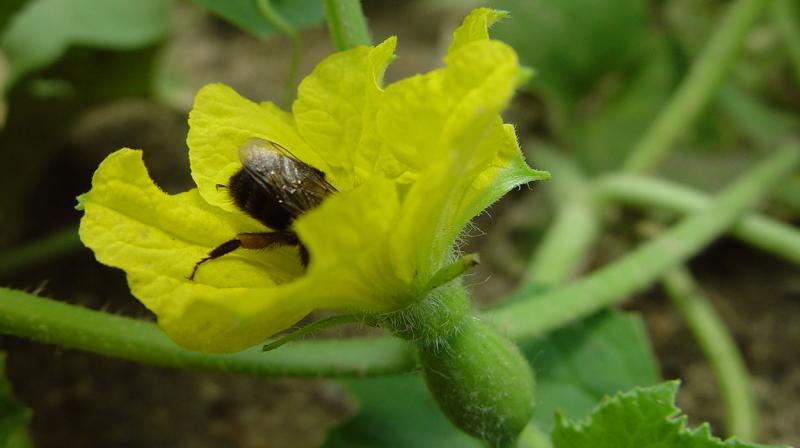
Watering: Vine crops need at least one inch of water from rainfall or irrigation each week during the growing season. Always soak the soil. Drip irrigation is preferred to reduce leaf diseases.
Fertilizer: If your soil test indicates a need for nitrogen, work half the recommended amount into the soil before planting. Once the vines start to “run” (spread out) or start to flower, sprinkle 1 to 2 tablespoons of lawn fertilizer (make certain it contains only fertilizer; that it is NOT a weed and feed product containing herbicide) around the plant to help it produce more fruit. If the plant is already growing well with large, dark-green leaves, it likely does not need this additional fertilizer.
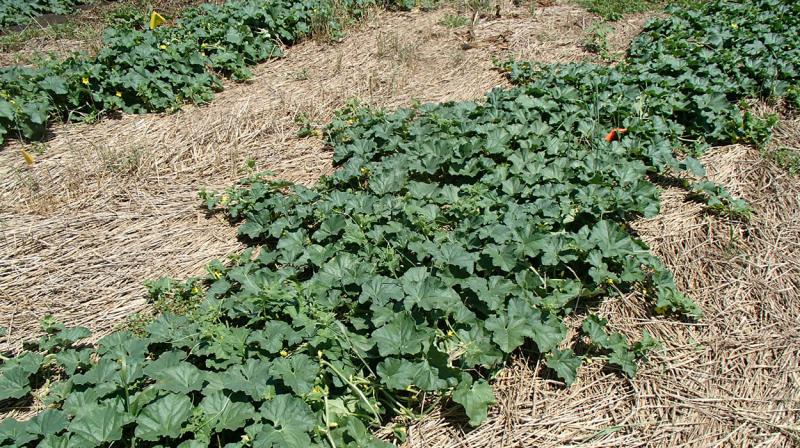
Mulching: Black plastic mulch is sometimes used to decrease weeds. Place black mulch once the soil has been prepared in the spring. Straw mulch can also be used to create a clean surface for melon fruit to rest on as they develop and discourage weeds.
Tip: A clear plastic placed over the soil for a few days before planting can help warm the soil for good seed germination; remove it before planting.
Weeding: Healthy melon plants can shade out many weeds after the first few weeks of growth, but you should cultivate shallowly prior to that time to decrease competition for water and nutrients.
Pests and Diseases
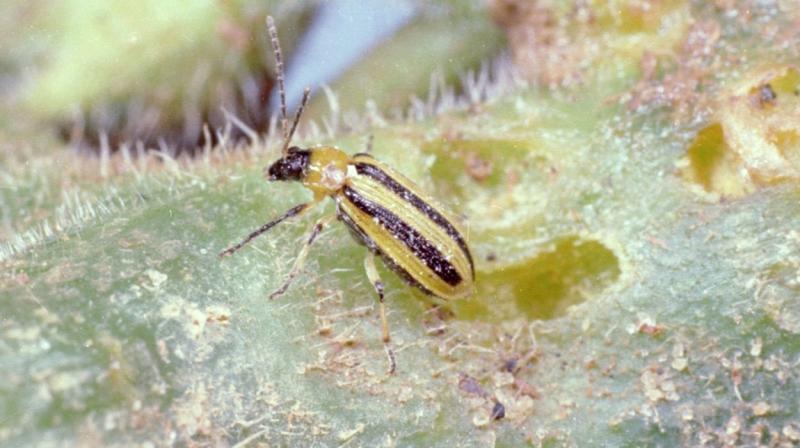
Major Pests: Striped and Spotted Cucumber Beetles can damage young melon plants by eating leaves, as well as stems and fruit. They can also spread bacterial wilt (Figure 7).
Diseases: Bacterial wilt can be carried by cucumber beetles and infect cantaloupe and other melon plants (but not usually watermelon). It clogs the cells that carry water throughout the plant, so the plant wilts and does not recuperate. Remove the plant – there is no cure.
Minor Problems: There are several fungal diseases that can attack melons, causing leaf spots, wilting, yellowing or fruit blotches. The best way to avoid these is to not plant melons in an area that they (or pumpkins, squash or gourds) were grown in the previous two years.
Harvest
Days to Harvest: Generally 60 to 85 days, depending on the species and variety. Withholding water the day before harvest can help concentrate the sugars in the fruit. Check harvest procedures closely for the particular variety you plant.
| Melon Type |
after picking? |
|
| Watermelon |
|
Area resting on ground turns yellow; tendril on stem dries. |
| Ananas |
|
Ends soften, mostly yellow-orange color; Slips easily. |
| Asian |
|
Varies; may slip; look for softening of ends. |
| Canary |
|
Turns bright yellow, may need to be cut from vine. |
| Charentais |
|
Cut from stem when leaf or tendril closest to the melon turns yellow. |
| Crenshaw |
|
“Forced” slip once fruit turns butter yellow. |
| Galia |
|
Slips easily. |
| Honeydew |
|
Color changes to whitish; Cut from stem. |
| Muskmelon |
|
Varies, but usually easy to forced slip. |
Note: “Slips” means that a fruit will separate easily from the vine with a gentle tug;
“Forced Slip” requires a bit of pressure to separate.
Storage and Preparation
- Storage:
- Whole Fruit: Store whole fruit at room temperature (60°F is ideal); chill damage will occur after a couple of days in the refrigerator for most melons. However, muskmelon can be stored for two weeks at temperatures from 36° to 45°F.
- Cut Fruit: Cut fruit should always be stored in the refrigerator for food safety reasons.
-
Preparation: For information on preparing melons, see our Pick it! Try it! Like it! resources for watermelon and cantaloupe.
-
Nutrition facts: Melons are high in Vitamins A and C, fiber and are low-calorie. Most melons are a low-acid fruit.
